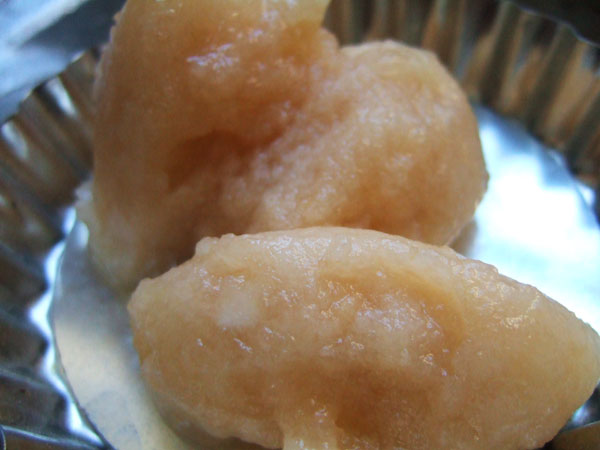The Apple Pancake: Apples fried in a sweet batter, covered in a buttery, caramel crust.
In June, the Lower East Side Tenement museum held its annual benefit, themed around the multi-cultural food of the New York. It featured vendors and restaurateurs cooking up some of the best food in five boroughs: Tortilleria Nixtamel; Orwasher’s Bakery; Ma Peche; Murray’s Cheese; The Brooklyn Brewery and many more. I was invited to do a little food demo, so I wanted to do something flashy: I decided on Reuben’s Apple Pancake.
Reuben’s Restaurant was one of the iconic eateries that haunted midtown from the turn of the century until 1966, when it shut its doors (debatable–it survived at a different location with a different owner until 2001). A kosher-style deli, it was the type of place that the children and grandchildren of Ashkenazic Jewish immigrants would eat alongside stars of stage and screen; sometimes, the two were one in the same. It was most well know for its sandwiches named for celebrities–yes, it was that kind of place, one of the ones from which all other celebrity themed sandwich shops descended. Most notably, “The Reuben.” Concocted by the restaurant’s owner for some hungry young starlet, it was a mighty stack of multiple meats, cheese and french dressing, that is arguably the grandfather of the Reuben we know today.
In the 1960s, New York was barreling towards bankruptcy, an economic inevitability that took many of New York’s most notable restaurants with it. The same decade saw the decline and shuttering of Reuben’s, Horn & Hardart’s Automat, Schrafft’s, and more. After closing, Reuben’s still sold their famous cheesecakes via mail order. But the restaurant was famous for another dessert that could not be purchased over phone lines: The Apple Pancake.
The apple pancakes had to be made fresh, by guys in the kitchen who had been doing it for thirty years and had built huge biceps from flipping endless steel skillets. The pancake was a mixture of apples and cinnamon, cooked in a batter. What made it exceptional was the process by which it was cooked: the pancake was flipped in its skillet five or six times. Before each flip, butter was scooped into the skillet and the topside of the pancake sprinkled with sugar. When the pancake was fliped, the sugar and the butter worked together to create a caramel curst that was simultaneosly crispy and gooey.
After giving this recipe a try in my own kitchen, I discovered the result to be something between a funnel cake, an apple dumpling and creme brulee. It was promptly declared “stoner food” by those who sampled my recreation (and meant in the best possible way).
An apple pancake dripping with butter and caramel is not something that could be shipped through the mail. So when Reuben’s shuttered, it remained only in the hearts and minds of the New Yorkers who loved it. And then slowly, over time, it was forgotten.
It is now my mission to bring it back. MAKE THIS RECIPE. Below, a video of me cooking one up at the Tenement Benefit. It features two, mediocre pancake flips, but it will give you an idea of the technique.
Reuben’s Apple Pancake from Sarah Lohman on Vimeo.
Cooked by Sarah Lohman; video and narration by Eleanor Berke
Cooked by Sarah Lohman; video and narration by Eleanor Berke
The flip is important to the end result, but don’t let it intimidate you: with a little practice, anyone can flip pancakes like a pro. Practice with dry beans in a skillet to get a sense of the flick of the wrist. Then, when it comes time to hurl your apple pancake through the air, FLIP WITH CONFIDENCE.
Above all, make this recipe! It may be the most delicious thing on the earth.
***
Reuben’s Apple Pancake
From The New York Times, 1971: http://query.nytimes.com/mem/archive/pdf?res=F40C14FD3A55127B93C3A91789D85F458785F9
And NYTimes, 1986: http://www.nytimes.com/1986/01/11/style/de-gustibus-re-creating-reuben-s-legendary-apple-pancake.html?scp=1&sq=reuben’s+special&st=nyt
1 large cooking apple
¼ teaspoon cinnamon
¼ cup plus 3 tablespoons sugar
1 egg
⅔ cup milk
½ cup flour
⅛ teaspoon salt
6 tablespoon clarified butter
1. Peel, core, and slice apple into 1/4-inch thick, quarter-moon-shaped slices. Place in bowl with 1 1/2 tablespoons sugar and cinnamon. Mix well; cover and allow to marinate for at least 24 hours; longer if possible. Stir occasionally.
2. Beat egg with milk; combine flour and salt, then add wet ingredients. Mix until batter is smooth.
3. In a non-stick, 9-inch skillet: heat 2 tablespoons butter until it sizzles. Add drained apples and cook over medium heat, stirring, for about 5 minutes, until apples soften.
4. Add another 2 tablespoons of butter. Pour in batter evenly and cook over medium-high heat, pulling sides of pancake away from edges and allowing batter to flow under and cook. Keep lifting with spatula to prevent sticking. When pancake begins to firm up, sprinkle 1/4 the sugar evenly over the top.
5. Add another two tablespoons of butter, slipping it underneath the pancake. Then flip the pancake and cook, allowing the sugar to caramelize. When it begins to brown, sprinkle top with another 1/4 of sugar. Add more butter if needed. Flip pancake again and allow sugar to caramelize on the bottom.
6. Sprinkle 1/4 of sugar on top. Add more butter to pan if needed. Flip pancake once again and continue caramelizing.
7. Sprinkle top lightly with sugar and place in 400 degree oven for 15 – 20 minutes, to caramelize further.

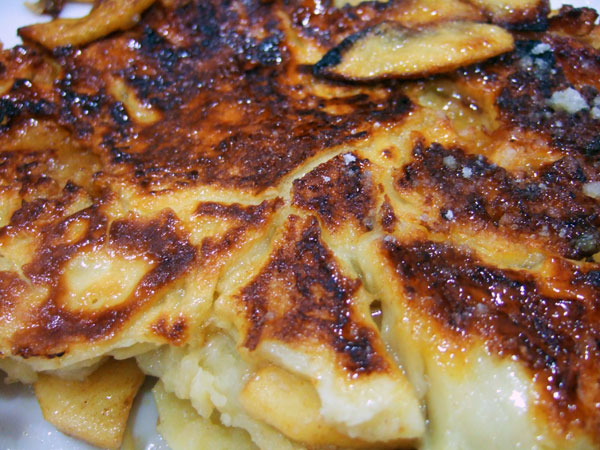

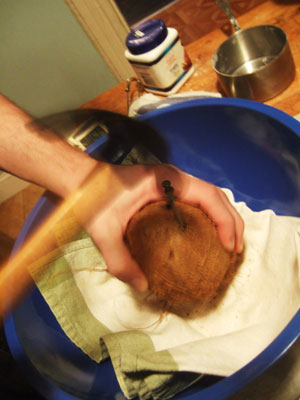
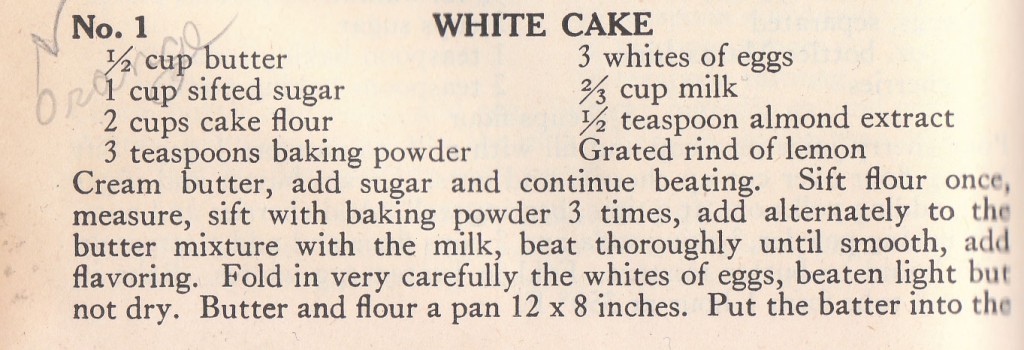
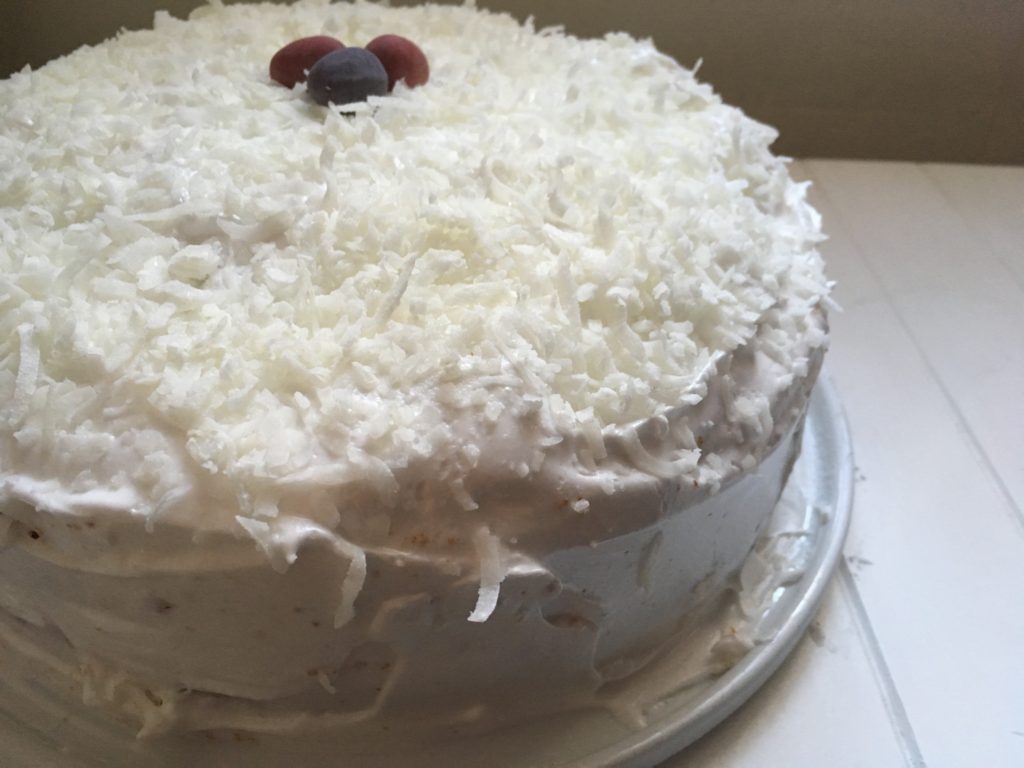
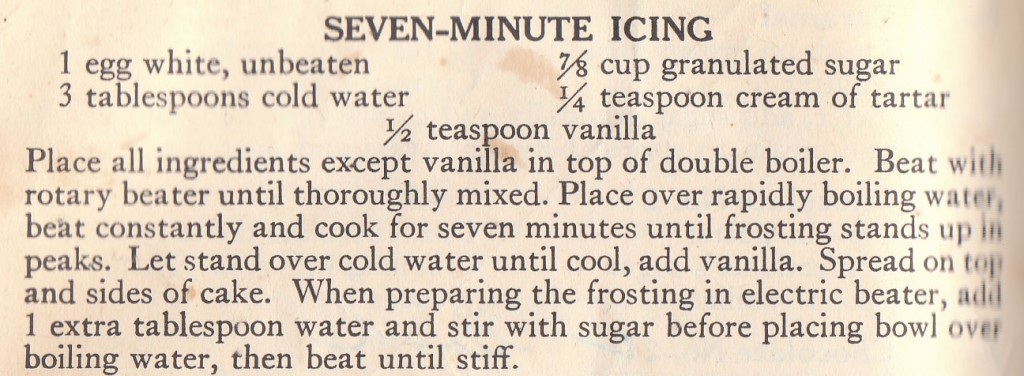

 I first made Apple Pan Dowdy way back in July, for the
I first made Apple Pan Dowdy way back in July, for the 